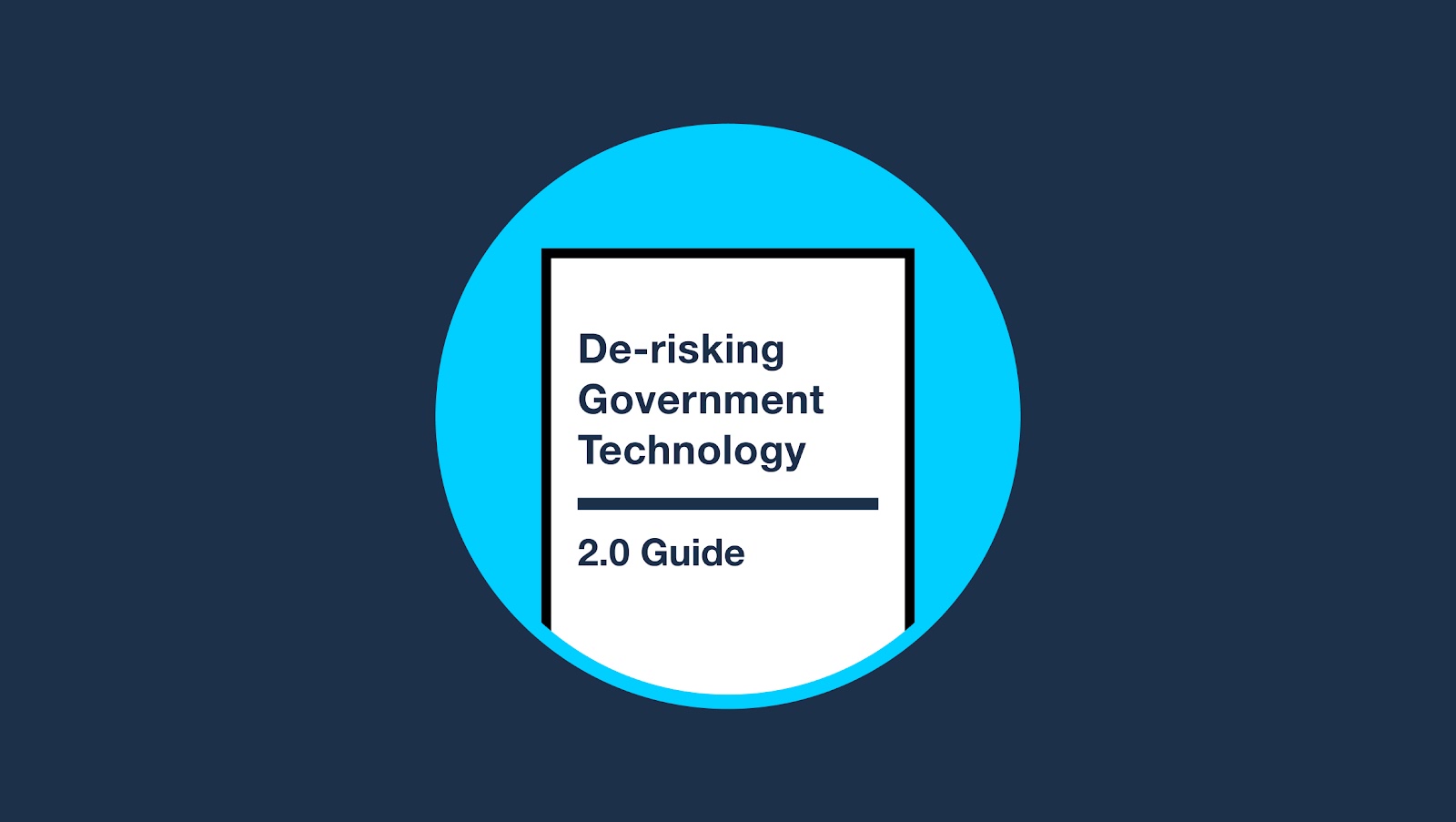
A revised and expanded guide for de-risking government technology projects
18F, part of GSA’s Technology Transformation Services, recently updated its De-risking Guide to help government technology projects avoid common challenges experienced during implementation.
“The De-risking guide is an important tool for improving federal, state, and local government’s approach to managing technology projects,” said GSA Administrator Robin Carnahan. “This new version incorporates recent research and makes it easier to follow principles and best practices, from asking the right questions when deciding on a software solution to building a healthy relationship with a vendor development team.”
The De-risking Government Technology Guide 2.0 offers 18F’s expertise on lowering the risk of project failure at any stage, from budgeting to post award. This is the first update since the guide was published in 2020. It unifies the original guide’s two parts – the State Software Budgeting Handbook and the Federal Field Guide. Plus, it includes a new in-depth section on vendor management to help government agencies confidently navigate the implementation phase of their technology projects.
“The new section on vendor management adds even more value to a guide that’s already proven to be a useful resource across federal and state governments,” said TTS Director, Ann Lewis. “Thoughtful acquisition of software requires collectively understanding existing systems, programs, and agency goals. The updated guide offers foundational knowledge that helps reduce cost, time, and risk during technology procurement, making service delivery more efficient and effective.”
Improving technology acquisition and development
An 18F team conducted research and learned about common challenges government agencies face as they work to obtain and develop state benefits technology systems. The project team met with state employees as part of the Office of Management and Budget’s Facing a Financial Shock Initiative, and they heard government agency staff express a strong desire for federally written resources on managing technology projects. The revised guide is a resource for both federal and state government agency executives and staff.
The updated guide offers methods, models, and examples that follow and reflect:
- Best practices in modern software development.
- 18F’s experience working with federal and state partners.
- Input from state employees.
Topics include:
- The differences and trade-offs between commercial and custom software.
- Key principles for effective custom software development.
- How (and why) to buy custom software development services using performance-based services contracting.
- How to work with a vendor’s development team to deliver human-centered software quickly.
The updated guide will help states that administer federal benefit programs use technology to make it easier for the public to apply for and receive important benefits, such as unemployment or SNAP. These changes respond to current government agency needs and also reflect the core 18F goal to ensure its products are relevant by reviewing and revising content over time. This was the hope of the guide’s original authors, which include GSA’s current Administrator Robin Carnahan. As the team is able, they’ll continue to do so.
Check out the new guide online. Share it with colleagues. Suggestions, questions, and feedback are welcome!

 U.S. General Services Administration
U.S. General Services Administration
